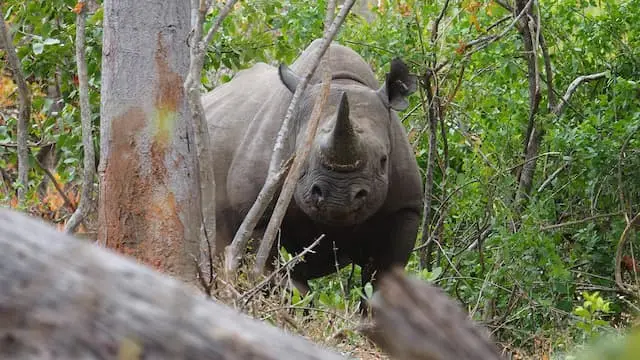

Elusive, solitary, and critically endangered — the Black Rhinoceros (Diceros bicornis) is one of the rarest sights in Kruger National Park. While both black and white rhinos inhabit the park, black rhinos are far more difficult to find, making a sighting of one of these ancient beasts a truly exceptional safari experience.
With fewer than 300 individuals believed to remain in the park, the black rhino is not just rare — it is one of the most fiercely protected animals in all of southern Africa. If you’re lucky enough to encounter one, you’ll witness a living relic of a wilder Africa.
Black rhinos are listed as Critically Endangered by the IUCN. Their population plummeted from over 100,000 in the early 1900s to fewer than 6,000 today.
Kruger’s anti-poaching strategy includes armed patrols, helicopter surveillance, tracking dogs, and night-vision sensors — essential, though it may reduce visibility for tourists.
Dry Season (May to October):
Wet Season (November to April):
The Black Rhinoceros is one of Africa’s most endangered and extraordinary mammals. Encountering one in the wild — especially in a place as significant as Kruger National Park — is a profound and humbling experience.
Whether you’re a wildlife enthusiast, photographer, or conservation advocate, learning about and protecting this incredible species is vital. While the odds of seeing a black rhino may be slim, they make the sighting all the more special — a true reward for the patient and observant safari-goer.